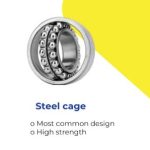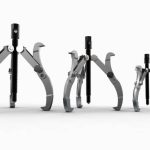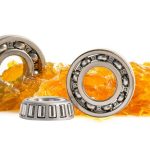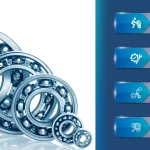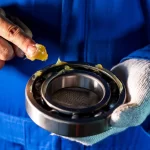Shaft seals, dirt seals, grease seals, lip seals, and many other names are only a few of the many names given to oil seals. They are simple components used in rotary shaft machinery to keep oil from leaking and impurities like dust, dirt, and water out. However, an oil seal’s most crucial role is to safeguard all ball, sleeve, and roller bearing types found in rotating shafts. Additionally, the seals stop blending two fluids that shouldn’t mix, such as water and oil.
What are oil seals?
A mechanical tool called an oil seal keeps lubricant from leaking out of the machine. It accomplishes its goal by sealing the equipment’s moving and stationary parts. Additionally, it prevents impurities from getting inside the machine and shortens its lifespan, an important role it completes. Numerous oil seals exist, including PTFE lip oil seals, rubber fabric oil seals, and rotating V-seals. An oil seal kit is a set of oil seals with the necessary dimensions and desired characteristics. An oil seal kit is more cost-effective and advantageous than buying individual oil seals.Types of oil seal NBC offer
Oil or other seals can be used for grease and oil seals. A flexible lip, radial lip, or rotating shaft seal are different names for an oil seal. Single lip, double lip, triple lip, and four or more lips are frequent configurations. Double dust lip seal A seal with a garter spring design is the Double Dust Lip (DDL) seal. It has two dust lips, as the name would imply, plus a fluid lip with a garter spring to keep the lip firmly attached to the wear ring. Given the ongoing evolution of bearing seal designs, this seal would be considered a starting seal. For more than 50 years, this design has been the workhorse of the freight business; it still is in some regions. NBC Brenco Bearing Seal performs the fundamental task of keeping contaminants and grease out. Because of the garter spring, this seal would add the most torque and temperature to the bearing. Efficiency plus bearing seals Due to eliminating the fluid lip using poly inserts and rotors, the Efficiency Plus (EP) seal has a reduced torque value of fewer than 15 in-lbs. Although it features a triple dust lip rather than a double dust lip, the dust lip is still a molded component of the design. A labyrinth-like insert and rotor interlock each other to replace the fluid lip. NBC Brenco labyrinth provides excellent grease while lowering the torque required to rotate the seal. Other types of oil seal and grease seals include:- Single lip oil seal
- Metal cased
- All rubber or polymers
- Internal orientation
- External orientation
- Axial orientation
- Spring-energized
- To serve as a physical barrier that keeps the lubricant in the designated area.
- To stop the lubricating oil from leaking outside despite high oil pressure.
- Act as a barrier to keep debris, contaminants, and other outside elements out of the system containing the lubricating oil.
Why is bearing a seal important?
Why are sealed bearings favored over the unsealed alternative? Why ought sealed ball bearings be preferred to unsealed ones? What advantages can sealed ball bearings offer?- Worry-free lubrication
- No contact
- Self-contained
What are bearing isolators?
Dynamic seals called bearing isolators are used to shield bearings from external impurities. They are revolving (rotor) and stationary (stator) elements. O-rings or strong seals are used in some bearing isolators, while they are constructed like labyrinths in others.Different types of bearing seals
For many bearings, a good bearing seal is essential. Bearing seals perform a dual function by keeping lubricants from leaking out while preventing impurities from entering your parts. Both procedures can help your bearings last longer, but choosing the proper seals for your components is critical. Different types of bearing seals include:- Contact seals
- No-contact seals
- Labyrinth seals




